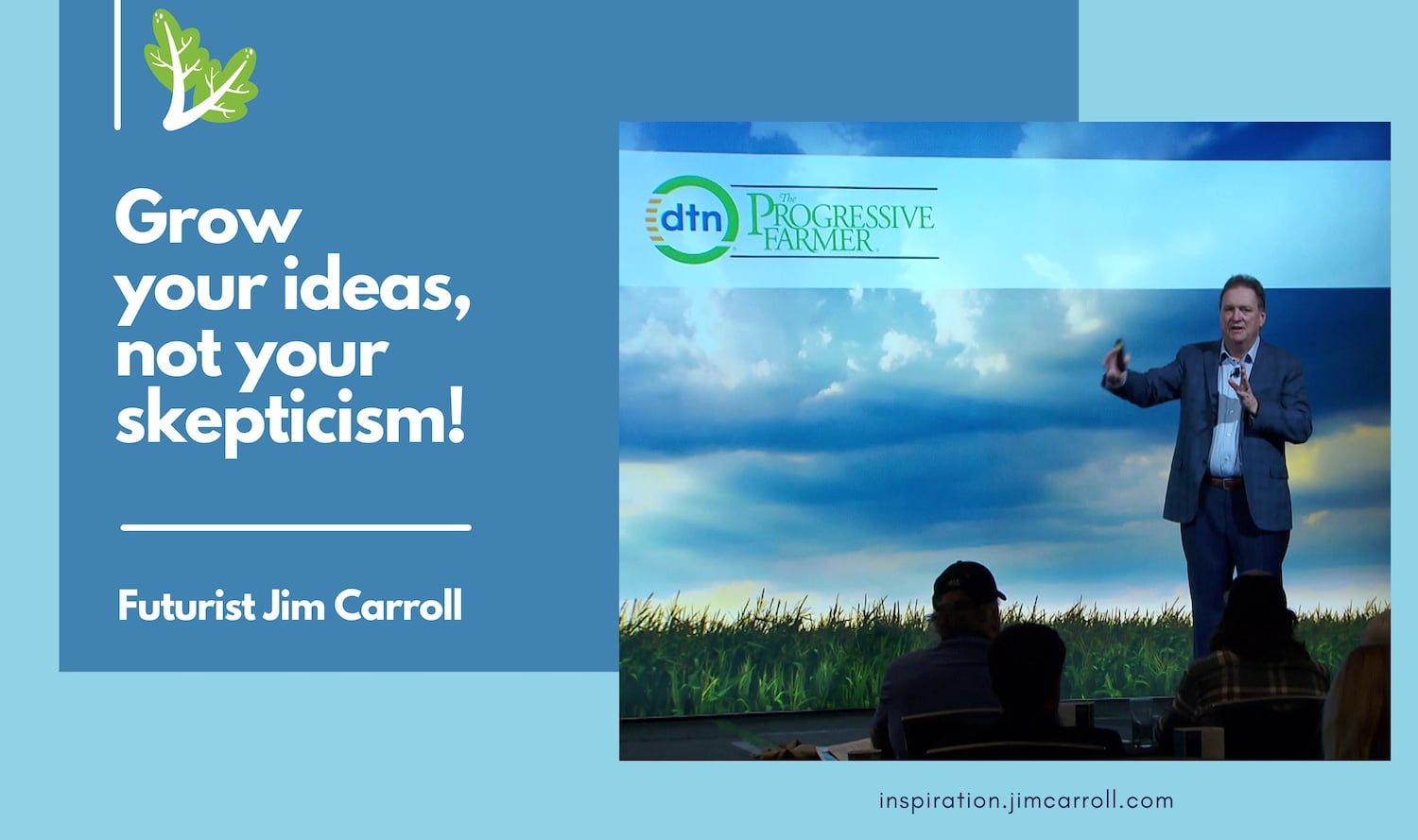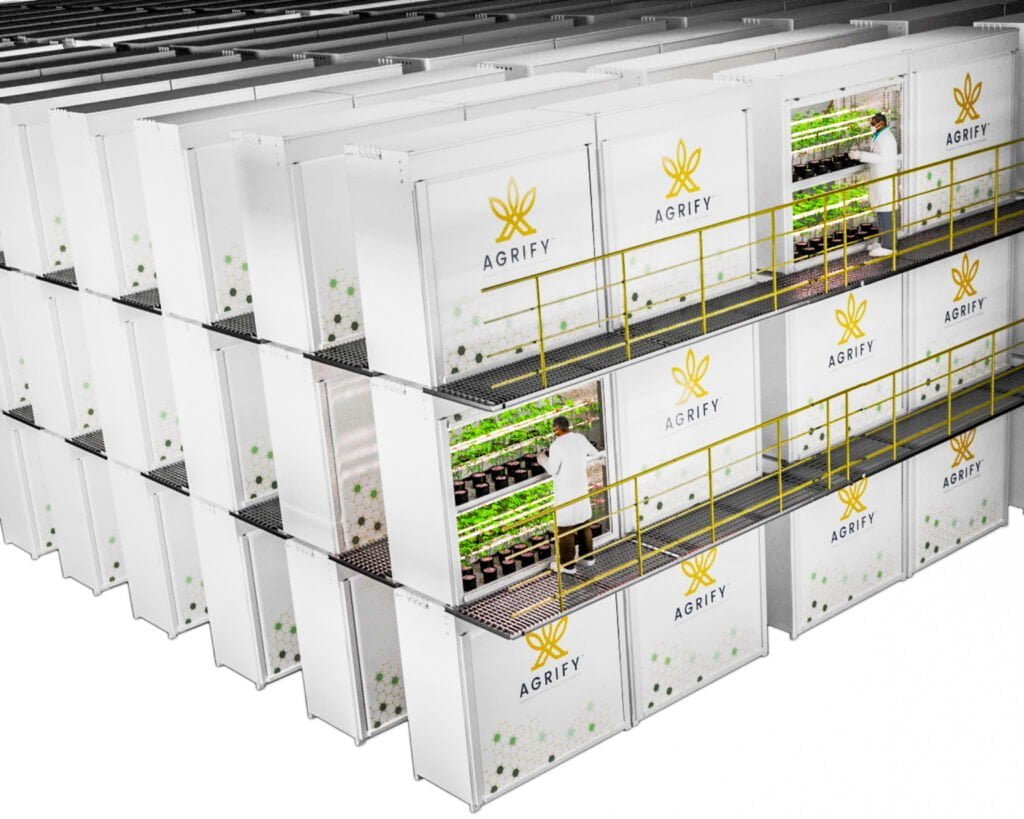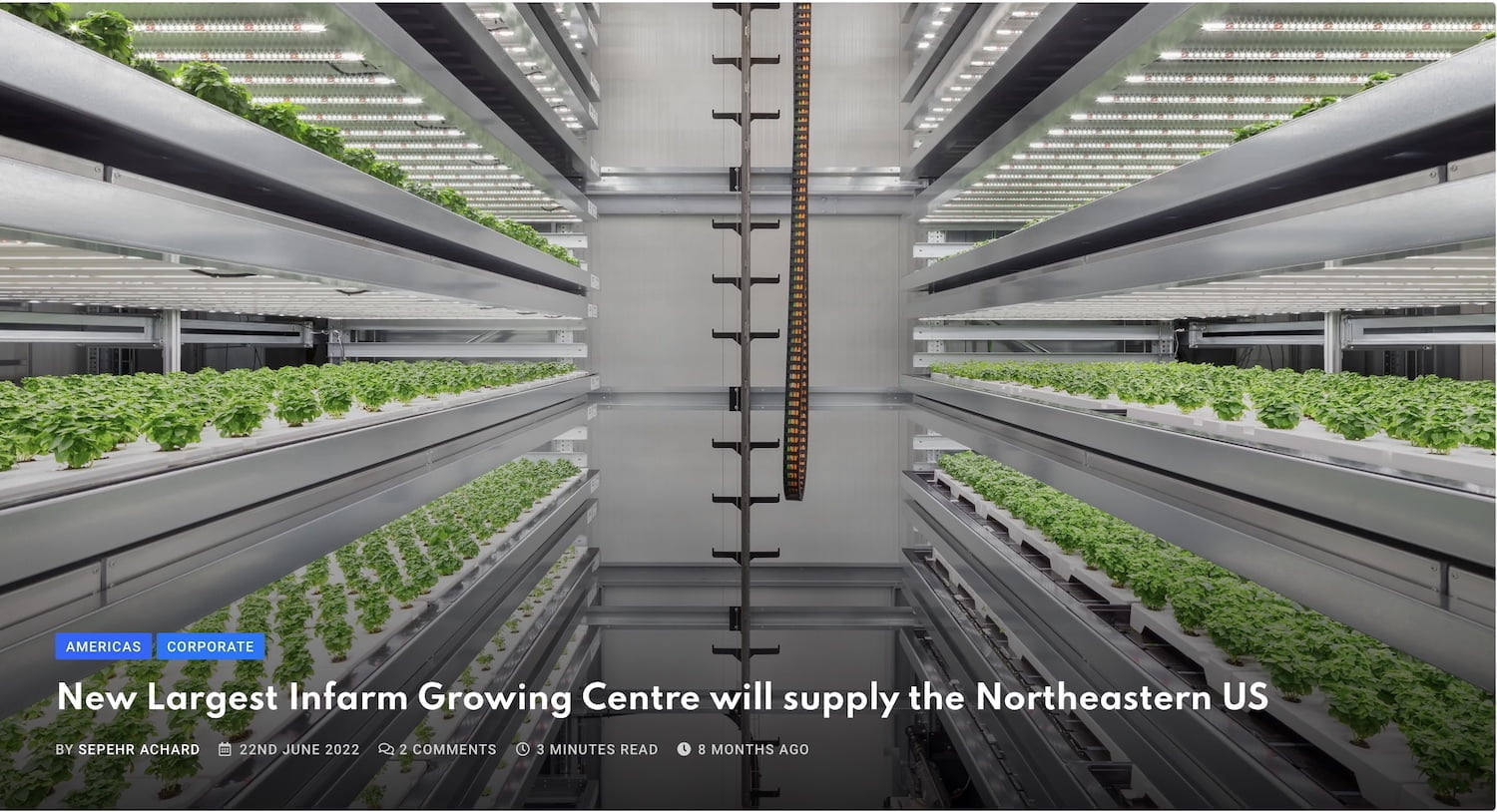“Grow your ideas, not your skepticism!” – Futurist Jim Carroll

One of the most fascinating trends unfolding in our future involves the world’s oldest profession.
No – not that one.
Agriculture!
On the weekend, I released the latest trend in my “BIG Future” series, having to do with “Vertical Farming at Scale.”

.The intro?
Imagine skyscrapers full of plants. That’s what begins to happen when the marriage of radical concepts, technology, and a pressing need for innovative thinking collide together to provide for a very BIG trend.
One that leads to a potential future in which we are no longer restricted to farming outdoors – in the future, we will be doing much more of it indoors as well. Vertical farming at scale.
Ask a farmer about the idea of vertical farming, and most will tell you it’s the dumbest idea they’ve ever heard – which led to the first version of today’s Inspiration which I decided not to use for some reason: “As soon as they tell you it’s a dumb idea, you know it’s the smartest thing you can do!”

In context, the idea is very, very new. Farming has been with us for centuries; greenhouses for but a few hundred years, but vertical farming for less than ten years.
Yet it provides for an absolutely seismic shift in our concept of agriculture and farming – and perhaps, for that very reason, the concept has been met with widespread skepticism throughout the traditional agriculture and farming community. There’s nothing new there – people always deny the reality of significant trends even in the face of massively compelling data as to why they will inevitably go forward. Just as car companies were skeptical of electric vehicles; music companies were skeptical of digital music, and newspapers and magazines were suspicious of the Internet, failing to accept its reality at the speed necessary to achieve any sort of innovation geared towards survival.
Any new idea and any new trend are often met with fierce resistance, undeniable skepticism, and boundless cynicism. Yet, in the long run, it’s the compelling arguments that make the trend so real, undeniable, and eventually, dominant.
Consider a few of the compelling arguments having to do with the idea of ‘plants grown in skyscrapers.’
Here’s what I wrote in my post – these are pretty compelling arguments that give the trend undeniable momentum.
Why is there such interest in the idea now? At the heart of it, there is a growing realization that vertical farming helps us to deal with some of the most significant challenges that society is faced with when it comes to food and agriculture.
- we expect the global population to grow to 9 to 10 billion by 2050, but the available arable land for farming is estimated to be but 1/2 of what it was in the 80s – as a result of the growing global climate emergency
- that suggests we need to produce 70% more food with far less land!
- in that context, conventional agriculture is truly a resource hog: it uses 80% of our freshwater, produces 24% of greenhouse gas emissions, and erodes and destroys soil with tilling and other methodologies. In addition, the pesticides and fertilizers that are used do cause long-term environmental damage.
- global warming is only going to make things worse. All you need to do is look at the growing battle over access to Colorado River water resources to come to the realization that some farmers, particularly in California and Arizona, will not be able to grow crops anymore – and more land will become infertile
The benefits of vertical farming? Almost too vast to mention!
- it reduces land use by 90 to 99% while vastly increasing productivity from each square meter of land – we can often get 3 to 10 times more crops from the same area. One German vertical farm company reports being able to grow 26 times more wheat in a vertical farm than found with open-field farming!
- in some facilities, a vertical farm “acre” can take up as little as 40sq m of ground space but can produce the same number of plants that would take 10,000sq m on a traditional farm!
- water can be reused and recycled over and over with little loss. Hydroponics uses 90% less water, and aeroponics uses 95% less than traditional farming systems. The water issue is huge considering the drought in the western US as well as other regions of the world. In addition, it provides a compelling reason to accelerate the opportunity throughout the Middle East – Saudi Arabia and the U.A.E. have bold vertical farming goals and some pretty significant projects for this very reason. This includes significant investment in accelerating desalinization technology.
- not only that, but as water moves through the vertical farming system, most of it is captured and re-used. Some say the only water that leaves a facility is found in the plants and vegetables that are shipped out once they are ready for market.
- virtually anywhere can be used for vertical farming – from the rooftops of buildings to abandoned warehouses, although we are seeing the construction of more and more vertical-farming-at-scale facilities
- year-round, 24-hour production is possible, going to the point that I often make on stage that “we are moving from a world where we only farm when the sun is up to continuous, nonstop 24-hour farming“
- environmental factors are well controlled, preventing crop loss due to drought, freeze, or frosts. Everything can be managed, from lights to water, temperature to humidity, irrigation systems to cameras to monitor growth (and utilize AI to monitor that growth)
- it significantly reduces the cost of bringing food from farmlands into urban areas – in my own case, I’ve got a pretty significant vertical farm, from one of the leading companies in Canada, just about a mile from my back door. The average food item travels some 1,500 miles before it reaches our dinner table, resulting in food loss, and massive carbon use in transportation. Consider this: nearly all of the leafy greens in the US come from California, Arizona, and Mexico – and so by the time it gets to market, it is already a few days old! Here’s a fact to think about: 90% of leafy greens grown in the U.S. are transported more than 3,000 miles to consumers on the East Coast.
- 70% of the world’s population will live in urban areas by 2050, up from 50% today – and so this transportation issue becomes a huge opportunity. Africa is urbanizing so fast that by 2030
it will cease to be a rural continent – and is already experienced with the idea. Already there are 800 million ‘city farmers’ according to UN statistics, including
25% of the population of Burkina Faso, 35% of Cameroon, 63% of Kenya, and 68% of Tanzania. 90% of the fresh vegetables in Accra, Ghana come from farming within the city – and so as the industry matures, the opportunities throughout the continent are massive! - we can see a reduction in the number of toxic pests since almost all of the production occurs in a large sealed environment indoors. This leads to a reduction in the use of harmful pesticides and other control mechanisms
- it eliminates or diverts significant capital cost investments such as tractors equipment – although as we start to build large-scale facilities, we could say that investment is merely being diverted to a different purpose
- speed to market! It’s common for full-size basil plants to grow in but three weeks, and micro-herbs in just one week. A full wheat crop can take six to 10 months to grow outdoors but only 2 to 3 months on a vertical farm. In winter climates, the production increase is huge – in Michigan, we can harvest lettuce 17 times a year compared to once or twice per season in outdoor farms.
- technology is coming into the industry, with AI being used to monitor and manage growing conditions, and robotics are being used to manage all aspects of operation, including watering, monitoring, and such aspects as automatic pollination
Bottom line? All of these trends provide a compelling argument for moving forward!
The result? Massive innovation.
Take Agrify, which is bringing to market what it calls, for lack of a better phrase, VFU’s – or, “Vertical Farming Units” – which are units that are entirely self-contained and stackable. Each unit contains the necessary monitoring and management technology, lighting, and water systems. Not unsurprisingly, Agrify has its roots in the legal cannabis industry – but the very technology used there is the technology that will take the overall idea of vertical farming forward!
 Vertical farming? Put it all together, and you get something like this:
Vertical farming? Put it all together, and you get something like this:

As someone who tracks trends and the future, I believe that this trend is so compelling, and moving so fast, solving big problems, that it is one of the most significant trends that will unfold at speed over the next ten to twenty years.




GET IN TOUCH
Jim's Facebook page
You'll find Jim's latest videos on Youtube
Mastodon. What's on Jim's mind? Check his feed!
LinkedIn - reach out to Jim for a professional connection!
Flickr! Get inspired! A massive archive of all of Jim's daily inspirational quotes!
Instagram - the home for Jim's motivational mind!